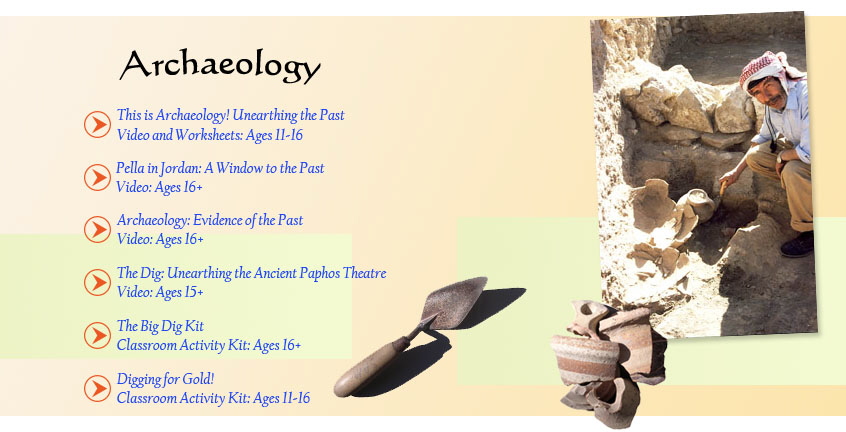|
THE BIG DIG KIT
Investigating Australian Archaeology
A Classroom Activity Kit
Code B2
George Cribb, resident in 1815 at the Rocks, Sydney, was a convict, a butcher, a landlord - and a bigamist!
He may not have realised it, but George has left a trail of evidence that can be used by your students to rediscover his world - and the worlds of those who came after him.
This kit is based on the 1994 archaeological excavations at Cumberland and Gloucester Streets, the Rocks - an excavation that came to be known as 'The Big Dig'.
In a series of activities that will take several lessons to complete, students evaluate a range of authentic historical and archaeological sources to uncover details concerning George Cribb, his family - and his society.
The activities also encourage students to explore the changing history of the site over time and how archaeological and historical sources can be used together to build up a coherent picture of past societies.
The CD ROM is an independent extension activity aimed at students who may wish to examine the archaeological process more closely.
The Big Dig Kit contains:
- 10 x Student Booklets (16 pages containing 33 sources).
Sufficient for a class of 20 if students work in pairs.
- 1 x Teacher's Booklet (16 pages). The teacher's booklet contains background information, instructions and 11 pages of photocopy masters for all student activities.
- 1 x CD ROM (Macintosh and Windows compatible). The CD ROM is a pictorial record of the excavations along with further information and student questioning on the practicalities of excavating the Cumberland and Gloucester Streets site.
- Suitable ages 15+
This kit is ideal for the following:
- Understanding how archaeology can reveal a historical personality interacting with their society;
- Evaluating and using historical and archaeological sources;
- Developing essay writing skills;
- Understanding how archaeological excavations add to our knowledge about a particular time period;
- Illustrating an Australian case study for use in the NSW preliminary HSC Ancient History course;
- Examining the role of convicts in Australian society.
Booklet Examples
- To view a sample of the teacherís booklet (69K): Click Here.
- To view a sample of the studentsí booklet (640K): Click Here.
To view these samples you must have Adobe Acrobat Reader installed on your computer.
Acknowledgements
This kit has been developed by Godden Mackay Logan Heritage Consultants, Astarte Resources and the NSW Historic Houses Trust. The project has been funded in part by a NSW Heritage Assistance Program Grant and has received support from the Sydney Harbour Foreshore Authority.
Designed and Produced by Astarte Resources 2000
For prices, see our catalogue 
Back to top
|


